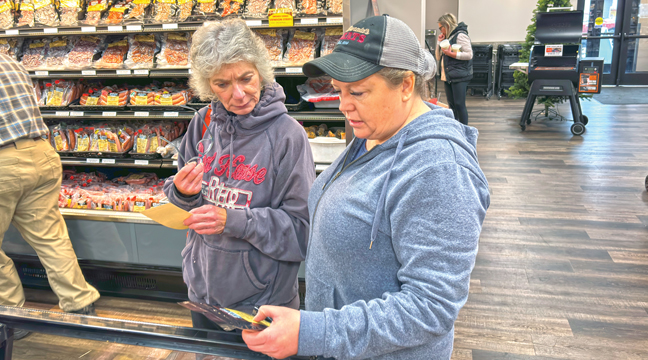“ASK A TROOPER” BY Sgt. Jesse Grabow of the Minnesota State Patrol
Snow and ice are a fact of life for us Minnesotans. Generally, harsh winter weather results in more overall traffic crashes than the warmer months because of “fender benders." The months of December, January and February can see more crashes than other months. Our Homeland Security and Emergency Management division and Office of Traffic Safety are here for drivers who might need a little help navigating through the elements this winter.
Safe winter driving begins before winter even gets here. It's important to give your vehicle a thorough check to avoid breakdowns. Have a mechanic check the battery, antifreeze, thermostat, tires and brakes before you travel this winter.
Before you go anywhere, check current road conditions at MN511.org and tell someone where you're traveling and what route you're taking. It's good to have a full tank of gas in case of an emergency, and always clear snow and ice from vehicle windows, hood, headlights, brake lights and directional signals before you leave. Headlights must be turned on when there is precipitation present; it's the law.
Once you get on the road, stay on designated roads and avoid shortcuts that might not be plowed or patrolled. Watch for snowplows and give any you see extra room.
Remember:
- Be patient. Drive at safe speeds and give yourself plenty of time.
- If driving on snow or ice, brake slowly and gently. Brake early when approaching an intersection.
- If you start to slide, ease off the gas pedal or brakes. Turn the steering wheel in the direction you want the front of the vehicle to go. Then straighten your vehicle. If you have antilock brakes, apply steady pressure.
- In fog, drive with headlights set on dim or use fog lights.
- Never try to pass in blowing snow, as there may be vehicles ahead you cannot see.
- Always buckle your seat belt and be prepared to turn back or pull over if conditions become threatening.
Keep essential items in the car in a winter survival kit. Your kit should include: - Boots, jackets, gloves.
- Blankets.
- Cell phone charger.
- Flashlight and spare batteries.
- Bottled water and snacks.
- Booster cables.
- Basic tools.
- Sand or cat litter for tire traction.
- Red bandana to use as a distress signal.
- Pencil and paper to leave a note or keep a diary.
If you do run into problems and get stranded, turn on your hazards and call 911 for help. Stick your red bandana out the window or tie it to your car's antenna to indicate you need help. Clear snow from your car's exhaust pipe and open a window for ventilation to avoid the chance of carbon monoxide poisoning.
Other than that, stay in the car, running the engine occasionally to keep warm and charge your cell phone. Keep your phone on so you can keep in touch with emergency responders. If it is dark, turn on your vehicle's interior light to make it easier for rescuers to find you.
For more information on how to deal with winter hazards, follow DPS on social media starting Monday for Winter Hazard Awareness Week.
A portion of state statutes were used with permission from the Office of the Revisor of Statutes. If you have any questions concerning traffic related laws or issues in Minnesota, send your questions to Trp. Jesse Grabow – Minnesota State Patrol at 1000 Highway 10 West, Detroit Lakes, MN 56501-2205. (You can follow him on Twitter @MSPPIO_NW or reach him at, jesse.grabow@state.mn.us).








